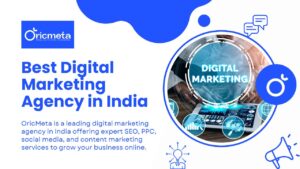
Two businessmen handshaking in office after signing contract
There was a time when marketing was mostly about reach. Whoever shouted the loudest or had the biggest billboard won. But today, attention is cheap and trust is rare. Consumers have learned to scroll past ads like reflexes. They can smell manipulation before they’ve finished their coffee. The real question brands are wrestling with now isn’t how to get attention, it’s how to deserve it.
And that’s where authenticity walks in.
The Shift From Attention to Alignment
Modern consumers don’t want to be sold to; they want to be understood. They’re looking for alignment for values that match their own, for brands that sound like real people, not corporate robots. It’s why a 10-second TikTok from a founder, filmed in their cluttered office, can outperform a $50,000 studio campaign. Because, simply put, people connect with people.
This doesn’t mean professionalism is dead. It means perfection isn’t persuasive anymore. The glossy ad with the flawless model and rehearsed slogan feels distant, almost alien. Meanwhile, the small coffee shop that posts an unfiltered video about a barista messing up a latte but laughing about it feels real. That “realness” is now the beating heart of effective digital marketing.
Why Authenticity Works (and Always Has)
Psychologists call it “the trust heuristic.” When we detect honesty, vulnerability, or imperfection, our brains lower their defenses. It’s the same principle that makes word-of-mouth recommendations so powerful. We trust friends, not faceless entities.
In the digital world, that translates to transparent communication, genuine storytelling, and consistent values. Consumers are constantly scanning for signs that a brand means what it says. The more congruent your message, tone, and behavior, the more believable you become.
Take Patagonia, for example. Their “Don’t Buy This Jacket” campaign wasn’t a marketing stunt, it was a philosophy. They invited consumers to think twice before purchasing, aligning the brand with environmental responsibility. The result? Not cynicism, but loyalty. People believed them because the message matched the mission.
Authenticity in Practice: Beyond the Buzzword
It’s easy to preach authenticity; it’s harder to practice it. Many brands make the mistake of treating authenticity as an aesthetic by posting raw photos, using casual slang, or pretending to be “relatable.” But consumers are sharp. They know the difference between being authentic and performing authenticity.
So what does authentic marketing actually look like in practice?
-
Transparent Communication
Share the “why” behind your decisions. Admit mistakes. Let customers see the process, not just the polished result. If there’s a delay in product delivery, don’t hide behind vague language and explain what happened and how you’re fixing it. -
Value-Driven Storytelling
Authentic brands know their “why.” They don’t chase every trend; they speak from their core purpose. Whether it’s sustainability, craftsmanship, or inclusivity, that purpose should show up everywhere from the copy on your homepage to the tone of your customer support. -
Humanized Content
People trust people, not logos. Showcase your team. Use names, faces, and stories. A CEO sharing a personal struggle on LinkedIn can do more for a brand’s credibility than a dozen paid campaigns. -
Consistent Voice Across Platforms
Authenticity breaks down when your Twitter sounds human but your website sounds robotic. Develop a brand voice that feels unified, conversational, and alive. Consumers notice coherence they interpret it as integrity.
The Trust Economy: What Consumers Really Buy
If you strip marketing down to its essence, every transaction is an exchange of trust. When someone clicks “Buy,” they’re saying, “I believe this brand will deliver what it promises.”
That belief doesn’t come from discounts or slogans, it’s built through micro-moments of reliability and honesty. Did the brand respond to that angry comment with empathy? Did it credit the artist who inspired a campaign? Did it keep its tone respectful even when challenged?
Each small decision adds or subtracts from a reservoir of trust. And in the hyperconnected age, one inconsistency can drain it overnight.
The Role of Social Media in Shaping Authenticity
Social media has made marketing conversational again. Brands can no longer hide behind scheduled posts and polished statements. People expect responses, engagement, and transparency in real time.
But the platforms themselves reward authenticity too. The algorithms behind TikTok, Instagram, and even LinkedIn increasingly favor content that sparks real engagement, comments, shares, and discussion, not sterile promotional noise.
In other words, the systems themselves are tilting toward sincerity.
This doesn’t mean every brand should overshare. Boundaries still matter. Authenticity is not the same as confession. It’s about selective transparency, sharing enough to create a connection without losing professionalism.
A local digital marketing agency in Pakistan, for instance, might grow faster by posting behind-the-scenes videos of brainstorming sessions or team outings than by flooding its feed with generic “growth hacks.” Why? Because people hire people they feel they know.
The Power of Imperfection
Here’s the paradox: the more brands try to look perfect, the less believable they become.
Think about how people talk in real life. We hesitate, interrupt ourselves, and backtrack. We mix humor with sincerity, sarcasm with hope. When a brand speaks that way naturally, with a few quirks, it creates what psychologists call “cognitive empathy.” We see a reflection of human rhythm, and it feels safe.
Imperfection doesn’t mean sloppy branding or lazy communication. It means allowing room for reality. Spelling out your thought process. Sharing the lessons learned from a failed launch instead of pretending it never happened. Letting your customers in on the journey.
A creative logo design agency in Pakistan, for example, can turn this principle into an advantage by showing rough sketches, early drafts, or rejected ideas. Those glimpses of process don’t weaken credibility, they strengthen it. Clients begin to appreciate the craft behind the polish and feel part of the story rather than just spectators.
Data, but With a Soul
Here’s the tricky balance: authenticity and analytics aren’t enemies. Data is essential, it tells us what works, what doesn’t, and who’s listening. But too often, brands chase metrics at the expense of meaning. They optimize for clicks instead of connections.
The smartest marketers use data to deepen authenticity, not replace it. They study behavior to understand needs and craft stories that resonate, not manipulate. For instance, tracking engagement can reveal when your audience is most active, but only genuine conversation can reveal why they care.
In short: use numbers to listen better, not to talk louder.
Case Study: When Brands Get It Right
Consider Airbnb’s “Belong Anywhere” campaign. It didn’t focus on price or convenience; it focused on belonging, a deeply human emotion. Every photo, every testimonial, every host story reinforced that theme. Airbnb wasn’t selling rooms; it was selling connection.
Or look at Dove’s “Real Beauty” initiative. By using real people instead of models, Dove built an emotional bridge to consumers who were tired of impossible standards. Their message didn’t need gloss, it needed truth.
Both examples share one thing: alignment between values, message, and execution. They didn’t just talk about authenticity, they lived it.
What Happens When Authenticity Falters
When brands fake authenticity, the backlash is swift. Remember Pepsi’s infamous protest commercial with Kendall Jenner? It tried to tap into social justice conversations but trivialized them instead. The disconnect between the message and reality was too wide, and the internet noticed instantly.
Consumers today have a finely tuned radar for authenticity. They can detect insincerity in tone, timing, and even body language. Once trust is broken, it’s incredibly hard to rebuild.
That’s why internal alignment matters. Authenticity can’t be a campaign; it has to be a culture. Your marketing team can’t sound empathetic if your company isn’t. Your tone online can’t sound inclusive if your internal practices contradict it. Authenticity isn’t a layer of paint; it’s the wood underneath.
Building Authenticity From the Inside Out
Here’s how brands can embed authenticity into their DNA:
-
Define Core Values and Live Them
Write them down, talk about them in meetings, and measure decisions against them. If a campaign doesn’t align with those values, it doesn’t run. -
Empower Your People
Encourage employees to speak in their own voices online. Let their individuality shine. Collective authenticity grows from personal expression. -
Audit Your Touchpoints
From customer emails to social media replies, every word is a chance to reinforce or erode trust. Consistency is key, but not scripted uniformity. Think harmony, not homogeneity. -
Listen More Than You Speak
Authentic brands are great listeners. They treat feedback as dialogue, not data points. Every message from a customer is an opportunity to build a relationship.
The Future Belongs to the Real
In a world where AI can write essays, deepfakes can mimic faces, and ads can track your mood, authenticity might be the last truly scarce resource. Consumers are tired of being treated as targets. They crave truth, transparency, and humanity in every interaction.
The irony is that technology, once blamed for eroding trust, is now forcing brands to reclaim it. Those who succeed will be the ones who sound less like machines and more like people trying, learning, and caring out loud.
Because in the end, authenticity isn’t a tactic. It’s a way of doing business that sees customers not as conversions but as a community. And in that community, trust isn’t bought, it’s earned, one honest moment at a time.





